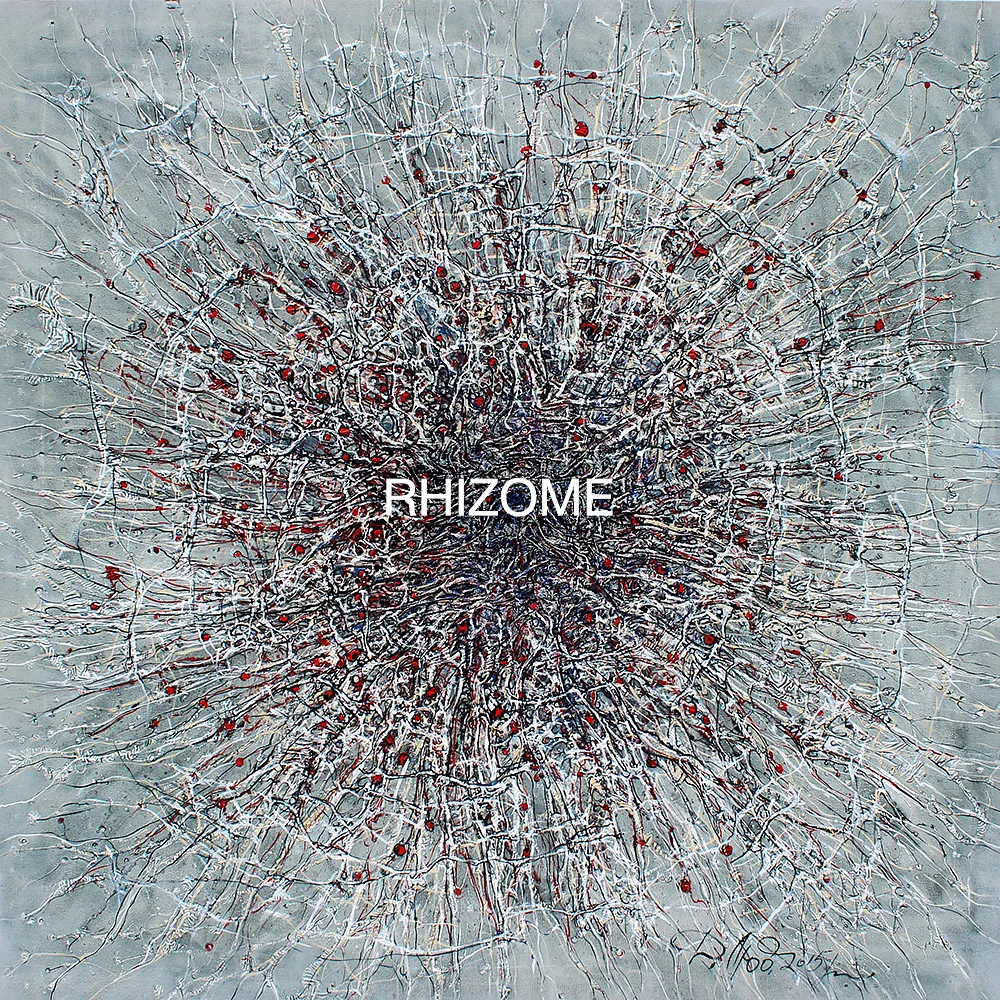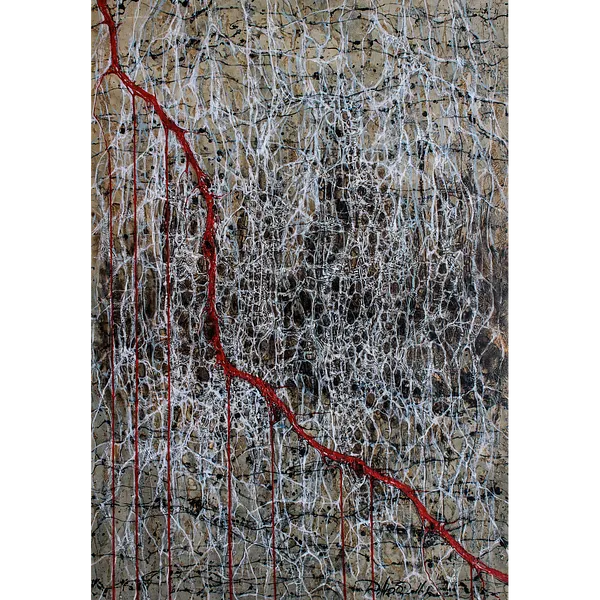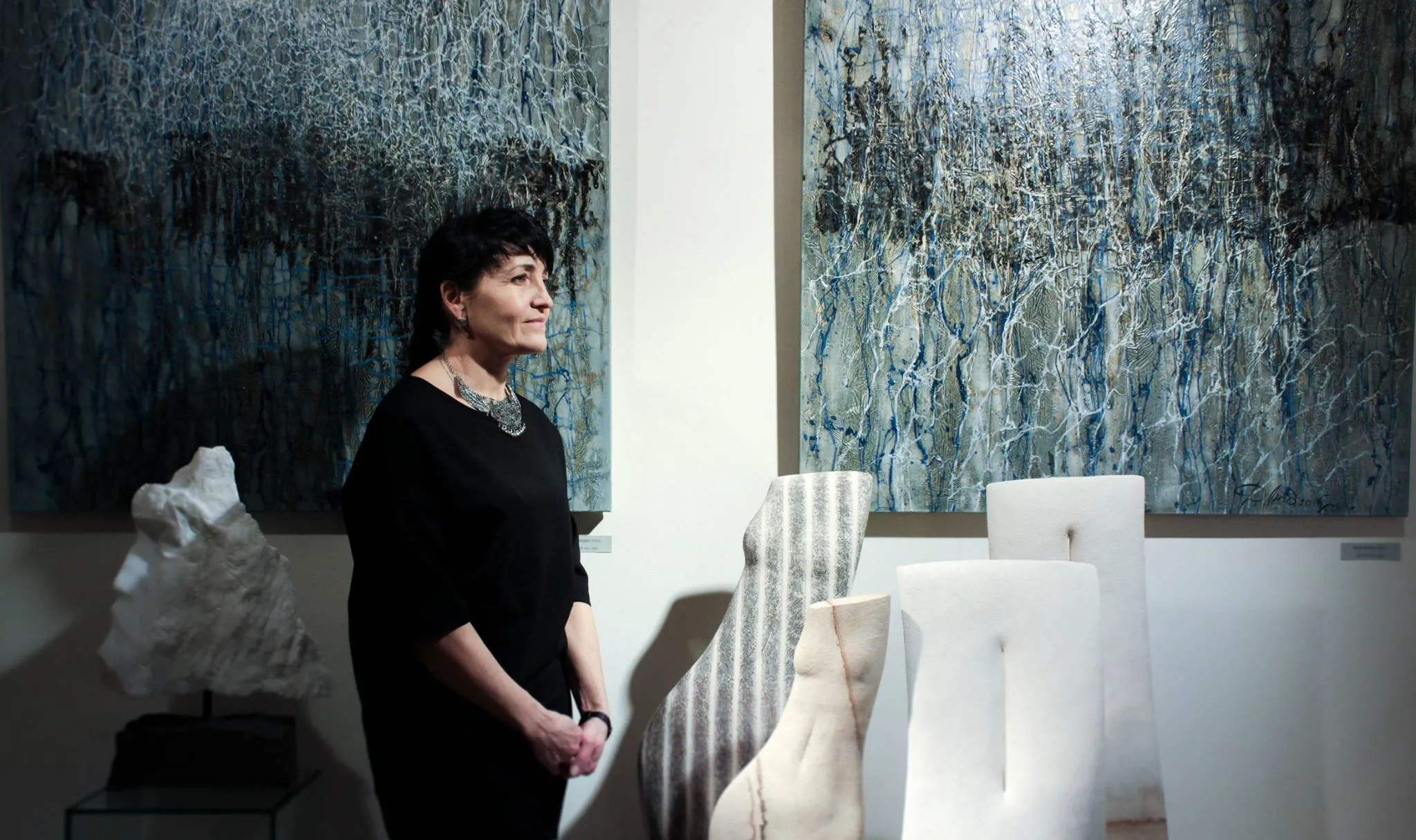Rhizome
Lviv
2015
Rhizome (from the ancient Greek "rhízoma" – "rootstock") is a nonlinear system of bonds, extending simultaneously in all directions and is infinite in its essence. One of the principles of such a system is the principle of inoculation, where each part of the rhizome can be combined with any other. The term comes from botany, where it denotes some types of plant rootstocks.
Multilayered, vibrating canvases of woven lines create abstract compositions, images, and figures. The artist calls the technique of drawing (painting) lines on a canvas "rhizomes", according to the term "rhizome", which literally means "rootstock", or a system of nonlinear ties. In philosophy, this term is one of the key concepts by Gilles Deleuze (1925-1995) and Felix Guattari (1930-1992).
The concepts are based on the principles of manifoldness and endlessness, the absence of a hierarchy, the possibility of all combinations and choices, the unimportance of gaps and cracks, confrontation with stable linear connections in existence and thinking. The configuration of rhizomes has neither the end nor a center; it is a constantly pulsating and dynamic system with temporary stable zones, the so-called plateaus. Also, rhizome is considered as a type of labyrinth (for example, Umberto Eco’s "The Name of the Rose").
Liudmyla Davydenko progressed to this technique along her whole creative path. From 2017 to this day, the artist creates works simultaneously in ceramics and painting, and a special approach to the process of creation, the found definition – "rhizomes", combines planar and voluminous work.
The concepts are based on the principles of manifoldness and endlessness, the absence of a hierarchy, the possibility of all combinations and choices, the unimportance of gaps and cracks, confrontation with stable linear connections in existence and thinking. The configuration of rhizomes has neither the end nor a center; it is a constantly pulsating and dynamic system with temporary stable zones, the so-called plateaus. Also, rhizome is considered as a type of labyrinth (for example, Umberto Eco’s "The Name of the Rose").
Liudmyla Davydenko progressed to this technique along her whole creative path. From 2017 to this day, the artist creates works simultaneously in ceramics and painting, and a special approach to the process of creation, the found definition – "rhizomes", combines planar and voluminous work.
















,%20Diptych,%2070%D1%8570,%202016,%20%D0%BF%D1%80%D0%BE%D0%B4%D0%B0%D0%BD%D0%B0.jpg?locale=en)

,%20100%D1%85100%20%D1%81%D0%BC,%202024.jpg?locale=en)
,%20100%D1%85140%20%D1%81%D0%BC,%202024.jpeg?locale=en)
,%20140x100%20%D1%81%D0%BC,%202024.jpeg?locale=en)
,%20100%D1%85100%20%D1%81%D0%BC,%202024.jpg?locale=en)
,%20200%D1%85100%20%D1%81%D0%BC,%202023.jpg?locale=en)
,%20140%D1%85140%20%D1%81%D0%BC,%202019.jpg?locale=en)
,%20140%D1%85140%20%D1%81%D0%BC,%202019.jpg?locale=en)
,%2095%D1%85130%20%D1%81%D0%BC,%202016.jpg?locale=en)
,%2095%D1%85130%20%D1%81%D0%BC,%202016.jpg?locale=en)
,%20200%D1%85100%20%D1%81%D0%BC,%202016.jpg?locale=en)